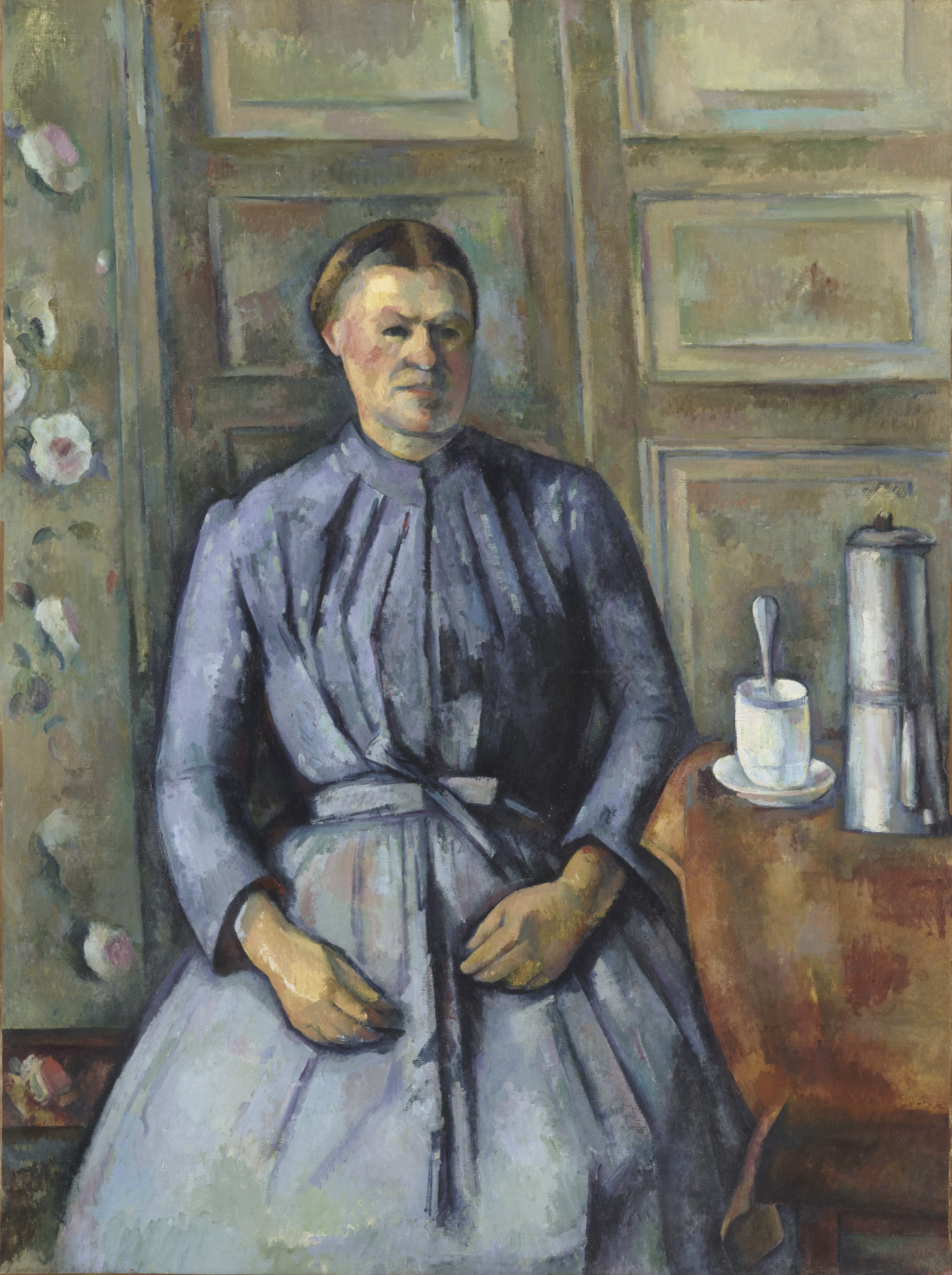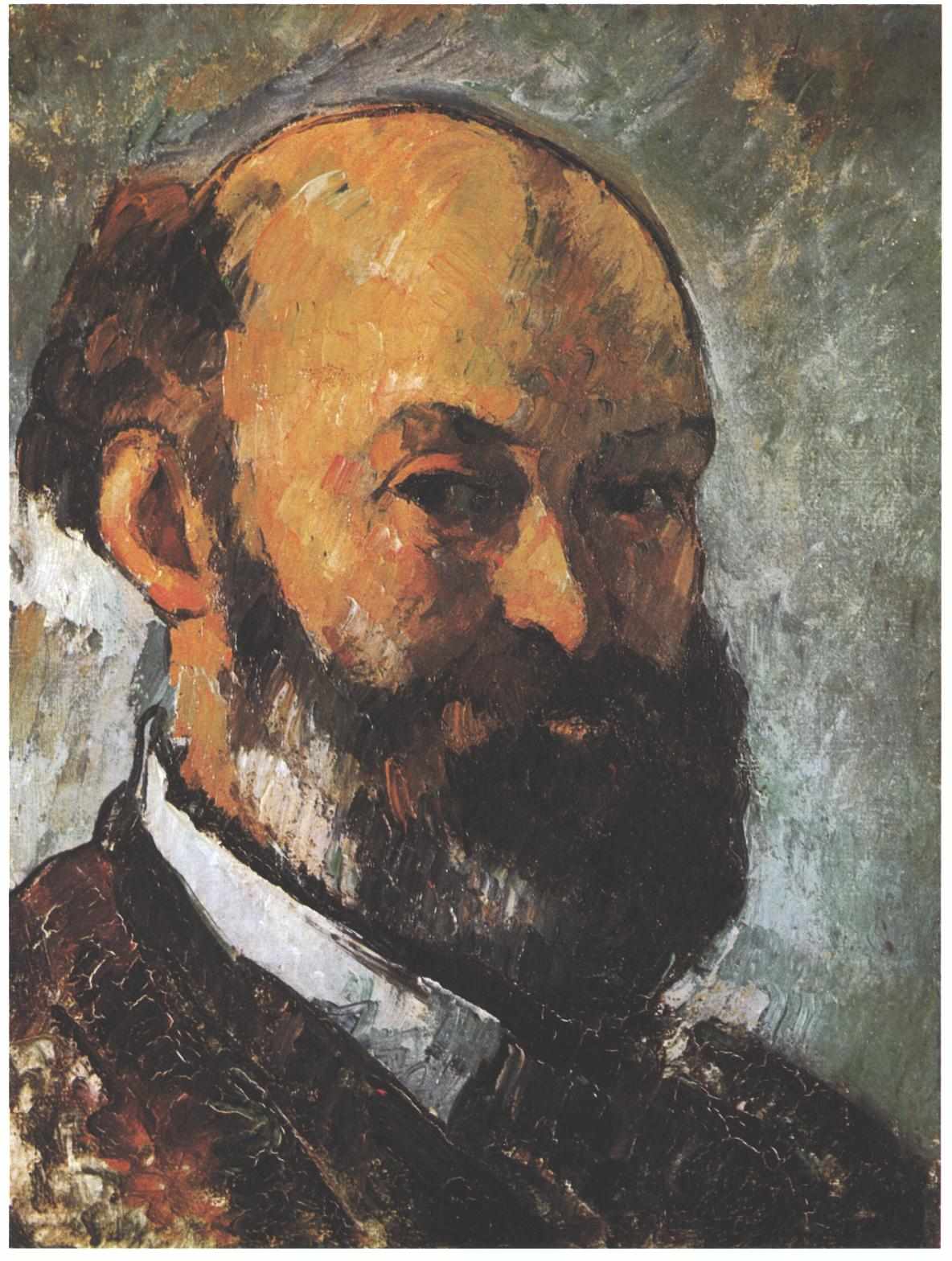The model for this portrait has not been precisely identified but she was probably one of the employees at the Jas de Bouffan, the Cézannes' family home near Aix en Provence. Cézanne used few professional models, preferring to work with members of his family or people he knew well, probably because he felt shy and painted very slowly. Despite this proximity, Woman with a Coffeepot is a study of forms rather than character.
The main elements in the composition—the woman's body, the cup, and the coffeepot—are painted in a highly simplified way in a strict arrangement of horizontal and vertical lines. This geometrical approach to volumes and the slant of the table represented from a higher angle than the objects standing on it herald Cubism.
Probably executed about 1895, the painting records the shift in Cézanne's art, twenty years after he had begun to move away from Impressionism. He wished to "treat nature through cylinders, spheres and cones" and has approached this portrait like a still life. Nevertheless, the model's work-roughened hands and plain but dignified face show the painter's sympathy for this "monumental icon of the simple life".
Source: Musée d'Orsay website.
This portrait is one of the masterpieces shown at the Portraits by Cezanne exhibition, which you can visit at Musée d'Orsay until September 24th. The works presented there are taken from private collections and prestigious museums from around the world. The exhibition explores the special pictorial and thematic characteristics of Cézanne's portraiture, including his creation of complementary pairs and multiple versions of the same subject.


 Paul Cézanne
Paul Cézanne